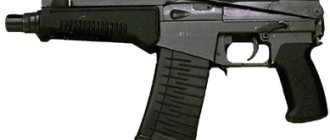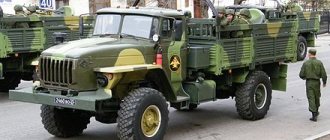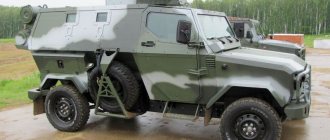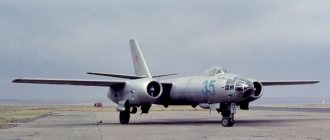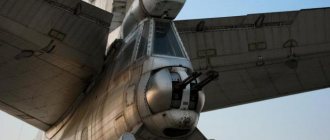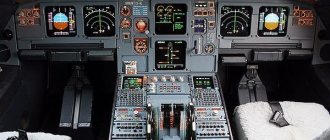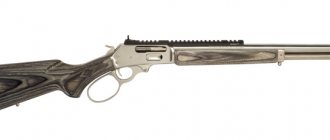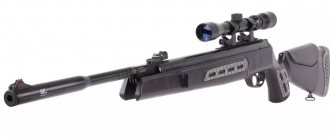The GAZ 66 all-terrain truck has proven itself since the times of the USSR in a variety of areas of use: military, agriculture, transportation to hard-to-reach areas of mountains, forests, etc. At one time, in terms of overcoming obstacles and difficult terrain with a model truck 66, few could compete with similar domestically produced cars. It must be said that the designer of the GAZ 66 (colloquially “Shishigi”), A.D. Prosvirnin, did a great job. The start of serial production of the car dates back to 1964. Mass production of the car continued until 1995 (certain modifications - until 1999).
Body GAZ 66
The length of the car body is 5805 mm, width - 2322 mm, height - 2520 mm, which, however, is quite compact;
wheelbase - 3300 mm. The front wheels have a track width of 1800 mm, the rear wheels have a track width of 1750 mm, that is, even on an ordinary clearing, the car should not go beyond the track, not to mention dirt roads. When equipped, the vehicle weighs 3640 kg, while the total weight is 5970 kg. The load on the front axle is 2715 kg, on the rear axle - 3055 kg. The vehicle provides a carrying capacity of 2 tons on any, even the most difficult terrain. The Gas 66 cabin is located above the engine. Of course, this improves the visibility of such a cabover option, also due to the height of the location. But constantly “taking” this height when getting into and out of a car is, according to many, a dubious pleasure. In addition, many car owners consider the size of the cabin to be small: when driving in difficult road conditions or off-road, there is a high risk of injury from hard surfaces and the edges of the cabin from the inside. It was also noted that in territories of military conflicts, the vehicle posed an increased danger in case of a mine explosion for those in the cabin, which is located directly above the wheels. Another disadvantage of this arrangement is the difficulty of access to the engine compartment. However, the benefit comes from the vehicle's more compact dimensions and even weight distribution on both axles.
Low pressure tires
Low pressure tire
The optimal solution for improving the technical characteristics of the Shishigi cross-country ability is using low-pressure tires.
Tires with this device, due to their softness, are optimized for obstacles and overcome the most difficult sections of the road.
The disadvantages of such rubber include rapid wear on asphalt surfaces and low speed limits. At the same time, a good set of tires, even on Avito, costs significant financial expenses, so our craftsmen are inventing more and more new methods to achieve a similar effect.
Specifications
The engine installed in the car was an 8-cylinder carburetor with a volume of 4250 cm3, designed for AI-76 and AI-80 gasoline.
It develops maximum power of 115 horsepower at 3500 rpm, which is enough for owners even in difficult operating conditions. Diesel was rarely installed on the GAZ 66 (usually the D-245 or D-243 engine). The maximum speed achieved is 90 km/h. Meanwhile, some note that when you independently remove the limiter, it becomes possible to accelerate to 110-120 km/h, but in this case the engine wears out, and its service life is significantly reduced. It is worth noting that for Gas 66 the technical characteristics were developed specifically taking into account use in difficult terrain. The gearbox is mechanical, 4-speed, with synchronizers in 3rd and 4th gears. You can use a lowering divider to overcome particularly steep slopes or to drive with a trailer, which is successfully used by car owners. It is possible to disable the front axle to save fuel on smooth, well-paved roads.
The Shishingu is equipped with 2 fuel tanks of 105 liters each, which gives a total range of more than 800 km based on the declared consumption of 21-24 liters per 100 km, depending on the speed. But in real conditions, as all motorists know, these figures will differ, and not for the better.
GAZ 66 tires have sizes 12.00-18. The presence of such special tires makes the car more suitable for use on mountain roads or even off-road. These well-designed tires allow the vehicle to successfully overcome mud, snow, loose and rocky surfaces. However, when turning, the car needs a circle with a radius of at least 19 meters. Some drivers have noted that it is not possible to turn around, say, in a small forest clearing the first time, but this problem is not significant.
Main modifications of the GAZ-66 and specialized bodies on its chassis
- GAZ-66-1 (1964—1968) - the first model without a centralized tire pressure control system
- GAZ-66A (1964-1968) - with winch
- GAZ-34 - a prototype with a 6 × 6 wheel arrangement
- GAZ-66B (since 1966) - airborne version with a telescopic steering column, folding roof and folding windshield frame
- GAZ-66D (1964-1968) - chassis with power take-off
- GAZ-66P - truck tractor (experienced)
- GAZ-66E (1964-1968) - with shielded electrical equipment
- GAZ-66-01 (1968—1985) - basic model with a centralized tire pressure control system
- GAZ-66-02 (1968—1985) - with winch
- GAZ-66-03 (1964—1968) - with shielded electrical equipment
- GAZ-66-04 (1968—1985) - chassis with shielded electrical equipment
- GAZ-66-05 (1968—1985) - with shielded electrical equipment and winch
- GAZ-66-11 (1985-1996) - modernized base model
- GAZ-66-12 (1985—1996) - with winch
- GAZ-66-14 (1985-1996) - chassis with shielded electrical equipment
- GAZ-66-15 (1985—1996) - with shielded electrical equipment and winch
- GAZ-66-16 (1991-1993) - a modernized version with a ZMZ-513.10 engine, reinforced tires (single wheels), modified brakes, a platform without wheel wells (later installed on GAZ-66-11 and GAZ-66-40 ); lifting capacity 2.3 t
- GAZ-66-21 (1993-1995) - national economic modification with double rear axle tires and a wooden platform of the GAZ-53 type, load capacity 3.5 tons.
- GAZ-66-31 - chassis for dump trucks
- GAZ-66-41 (1992-1995) - with naturally aspirated diesel engine GAZ-544
- GAZ-66-40 (1995-1999) - with GAZ-5441 turbodiesel
- GAZ-66-92 (1987-1995) - northern
- GAZ-66-96 - chassis for rotational buses
Export
- GAZ-66-51 (1968—1985)
- GAZ-66-52 (1968—1985) - with winch
- GAZ-66-81 (1985-1995) - for countries with temperate climates
- GAZ-66-91 (1985-1995) - for countries with tropical climates
Specialized
- AP-2 is a self-dressing unit, the main functional unit of the regiment's medical station.
- AS-66 is an ambulance designed to evacuate the wounded.
- DDA-66 is a disinfection-shower unit, used in military (sometimes in civilian) sanitary and epidemiological units.
- DPP-40 is a landing pontoon fleet, used in airborne engineering battalions to guide crossings over water obstacles.
- GZSA-731, 983A, 947, 3713, 3714 - “Mail”, “Bread” and “Medicine” vans.
- MZ-66 - oil tanker.
- R-142 - command and staff vehicle
- 3902, 3903, 39021, 39031 - mobile workshops for providing technical assistance to agricultural machinery.
- 2001, 2002, 3718, 3719, 3716, 3924, 39521 - mobile clinics.
- GAZ-SAZ-3511 is an agricultural dump truck on the GAZ-66-31 chassis (assembled in Saransk).
- GAZ-KAZ-3511 is an agricultural dump truck on the GAZ-66-31 chassis (assembled in Bishkek, Kyrgyzstan).
Buses
- NZAS-3964, Volgar-39461 - rotation buses (a comfortable body with seats for passengers was installed on the chassis).
- APP-66 - all-terrain bus, tires with pressure regulation. Produced by the 172 Central Automobile Repair Plant only for the needs of the USSR Ministry of Defense. About 8,000 copies were produced until 1987.[1]
- PAZ-3201, all-wheel drive version of PAZ-672.
- PAZ-3206, all-wheel drive version of PAZ-3205.
Controllability
Increased cross-country ability of the vehicle is made possible thanks to the drive on both axles and the use of self-locking differentials on both axles.
Owners speak highly of the fairly high ground clearance of 315 mm, which allows them to overcome obstacles even in the form of small bodies of water, the depth of which, by the way, can far exceed the ground clearance itself. The tire pressure regulation system is very helpful for motorists: the truck is equipped with an engine-driven compressor to inflate the tires. Equipping the engine with a pre-heater also has a positive effect. Since the car is equipped with a hydraulic separate brake system with a vacuum booster, it will not be possible to coast with the engine turned off, unfortunately for many drivers. But the presence of hydraulic power steering makes it easier for users to handle turns on difficult roads.
An important positive aspect of this car: the center of gravity is balanced and the loads on the front and rear axles are almost equal. As a result, the vehicle is able to land on all four wheels at once without blocking the cabin when jumping from small obstacles such as springboards, which makes the GAZ 66 military especially popular when used in airborne troops.
Story
The first prototypes of the GAZ-66 were created in 1962 as a further development of the 1.2-ton GAZ-62 truck, produced in 1958-1962 (extremely small quantities were produced) and a successor to the 2-ton GAZ-63 truck, produced in 1948-1962. 1968 Serial production of the GAZ-66 began in July 1964. In 1968, the truck received a centralized tire pressure regulation system (66-01 and modifications). In 1966 he was awarded a Gold Medal at the exhibition “Modern Agricultural Equipment” in Moscow. In 1967 he was awarded the Gold Medal at the International Fair of Agricultural Machinery in Leipzig. In April 1969, the GAZ-66 was the first Soviet car to receive the State Quality Mark. GAZ-66 was exported to all countries of the socialist camp.
The GAZ-66 was adopted by the USSR Armed Forces and was used in the national economy; after the collapse of the USSR, a large number of GAZ-66s began to be used in the Russian Armed Forces, mainly in the Airborne Forces and Border Troops.
In 1995, mass production of the GAZ-66-11 with modifications was discontinued. In return, the Gorky Automobile Plant mastered the production of the GAZ-3308 “Sadko” model, unified with the GAZ-3307. The last copy of the GAZ-66-40 rolled off the assembly line on July 1, 1999. A total of 965,941 units of the GAZ-66 family were produced.
Prices for Gas 66
Since this truck has long been out of production, prices for available used copies vary greatly.
Cars that are running, but without additional frills and require partial repairs, can be found in the outback for 70-130 thousand rubles. Moreover, the lower the price, the more willingly buyers respond: after all, these are usually poor people, from areas remote from civilization. There are also “stuffed” versions of machines, with partial replacement of equipment, improvements, etc. The asking price for them is 200-350 thousand, and this is far from the limit. But, according to reviews from owners, such specimens are not in great demand. A separate line is worth mentioning about all kinds of alterations of the model with skillful hands. One of the options that aroused everyone’s admiration was the “Darkhan” of the Kyrgyz workshop, called “Retro-Style”.
Their other development deserves no less respect - the successor to the Barkhan, the GAZ 66 Bulat, presented to the public at the 2008 Alma-Ata Auto Show. It has a diesel engine from Mercedes, the design is almost factory-made, quite organic, and the design is very attractive. True, the price can scare off many Shishiga fans - $80-100 thousand.
In the gaming and souvenir industry
Models in scale 1:43 were produced in 1993-94 by Yekaterinburg. They had very high detail. A similar model was produced in Saratov (formerly “Agat”). The Chinese produce the GAZ-66 and GAZ-34 models “with an awning”, “with a rocket launcher” and “truck crane” in various colors. Also in 2012, a batch of onboard GAZ-66s was produced by StartScaleModels with a circulation of 3,000 units. A plastic model is produced in 1/35 scale in various versions: a radio vehicle, with a ZU-23-2 anti-aircraft gun, with an awning and others. In the game Spintires with a kung, a trolley and a spare wheel.

